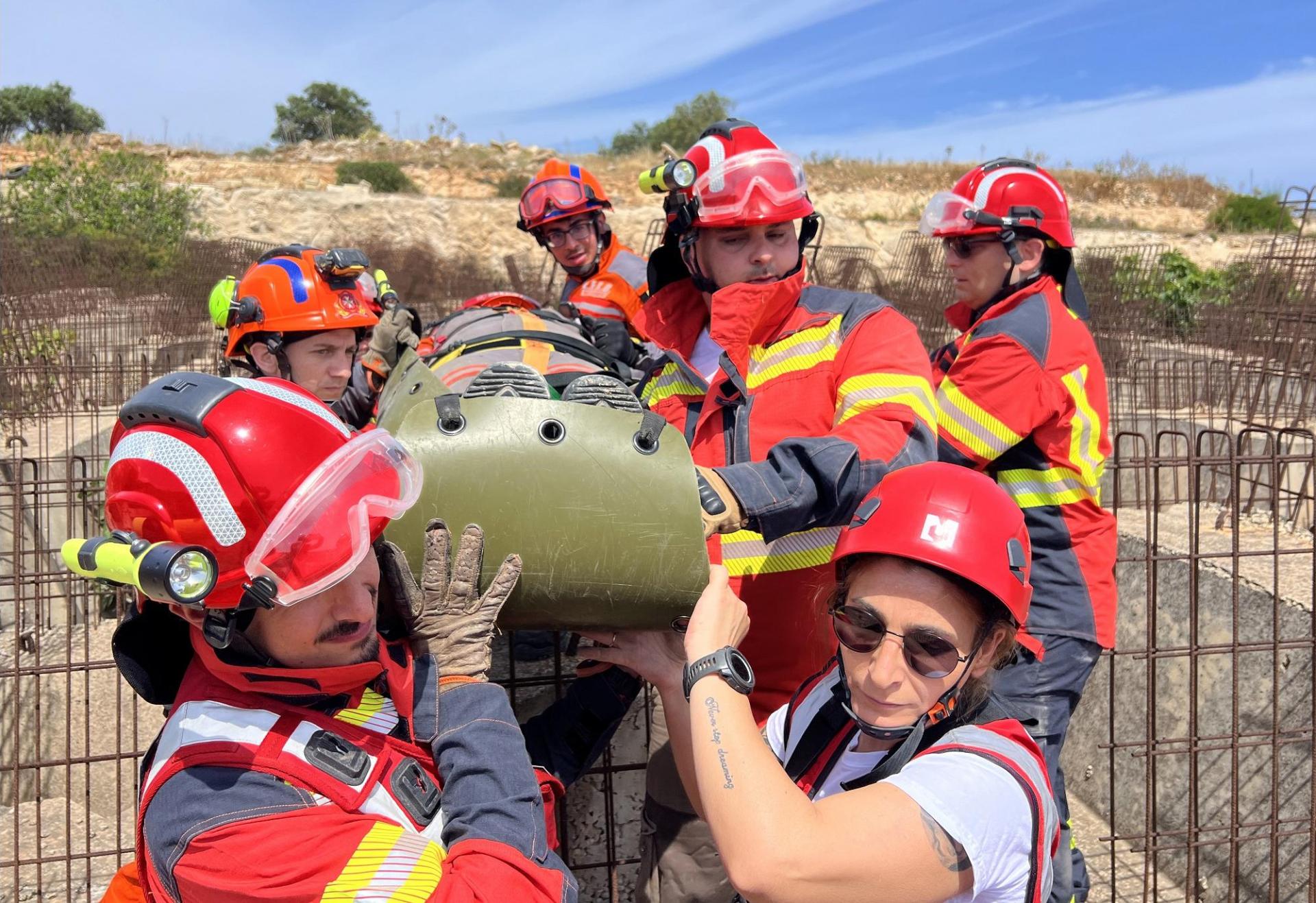In Pembroke, a woman with a high visibility protection clothing looks while her energetic terrier Lilly brings herself to the undergrowth and barks when she makes her way after her price.
But Lilly neither chases a ball, treatment or another animal; She is looking for a person who is hidden somewhere in the area and improves her skills to be ready for reality.
Because Lilly and her owner Andreea Chirita are members of the Order of Malta Canine Search and Rescue Team, a group of volunteers who offer the public help and the emergency services in the search for missing persons.
In Pembroke, a team of volunteers trains their dogs to locate missing people in a variety of scenarios. Video: Chris Sant Fournier/Antoine Farrugia Lauri.
“It is good for persecution, but also with area searches,” says Chirita.
“Lilly is a hunting terrier – a German hunting terrier – so she is very loud and very energetic … and as you can see, she is also very demanding,” she laughs.
Chirita is one of around 20 dog owners and other volunteers who put together the team that meets regularly for training sessions and mission drills.
The unit has recently supported the police in missing persons, including the search for the 36-year-old Jan Pace, who was found dead in Pietà last month, and the British pensioner Michael Clarkson in March, who was reported and found missing.
The times of Malta joined the team in Pembroke when they were put to the test in a series of staged rescue exercises that were carried out on this day in cooperation with NGO emergency fire and rescue unit.
Lilly's owner Andrea Chirita describes the one -year -old terrier as “very demanding”.
The dogs are divided into the persecution, air diverse and corpse dogs, explains team leader Simon Briffa. The team focused on “disaster scenarios, cases of missing person and even where the person was missing for a long time and could possibly be dead”.
While the persecution of dogs localized people by exposed to clothing or other objects of the missing person and pursuing the dog the unique fragrance of this person, air diet dogs are trained to locate a person who has signs of stress or shifts in a certain area, explains Briffa.
In an exercise, a drone hovers over us, while the team goes through a labyrinth of concrete blocks and metal rods under the direction of Tibet, a Belgian shepherd – a breed that is known for their role in military and police forces.
Tibet's owner Ettore explains that due to the young age of his indictment, he is trained in a variety of scenarios, including “recognition, tracking, rubble, wilderness … so that I can see his focus, his reaction and motivation to select his best talent for future training”.
And Tibet is not the only young dog in the team; Chirita proudly explains that with a little more than a year, Lilly's air scent, “took care of skills very quickly … for a one -year -old who was able to search alone, I think it is a great achievement”.
If one of the tracking or air scented dogs finds a missing person – a role of various members of the team during the training exercises – he usually leaves a bark to draw the team and remains with the missing person until help arrives.
Instead, corporal dogs or human remains are taught to lie down quietly next to their quarry, explains Samara Littlejohn, whose three and a half-year-old English setter/pointer mix dog skipper is in training for this scenario.
“We try more passive index in relation [of the victim] Around, ”she says.
 As soon as the team has been made aware of the location of the missing person, it is time to rescue.
As soon as the team has been made aware of the location of the missing person, it is time to rescue.
Skipper is trained on scents from samples that were collected by the unit or donated to the device, including hair, teeth and even a tissue sample when a member of the unit was subjected to spinal operation.
The samples are kept in an airtight container for non -use and then hidden in the training areas in ventilated cans so that skipper can be found, with a successful find that leads to a pleasure.
But being in a team is not just about work, says Littlejohn: “Skipper loves his work; he really enjoys it, which can be seen amazing.”
And the work of skipper and the other dogs could prove to be decisive in emergency situations, explains Josef Mizzi, a volunteer of the emergency fire and rescue unit: “Every second and sometimes the extrications can take a long time, especially in collapsed buildings”.
“Dogs with their sense of smell, which is much better than ours, makes it much faster to find the victim.”
In the meantime, the team's ability to react quickly is not only limited during the rescue missions, but emphasizes Briffa and states that government companies are usually not looking for missing persons up to 24 hours, but his team is not tied to the same restriction.
“We are easy to contact and can support anyone whose relatives have disappeared.”
To learn more about the order of the Malta Canine Search and Rescue Unit, visit the team's Facebook page.


Comments are closed.